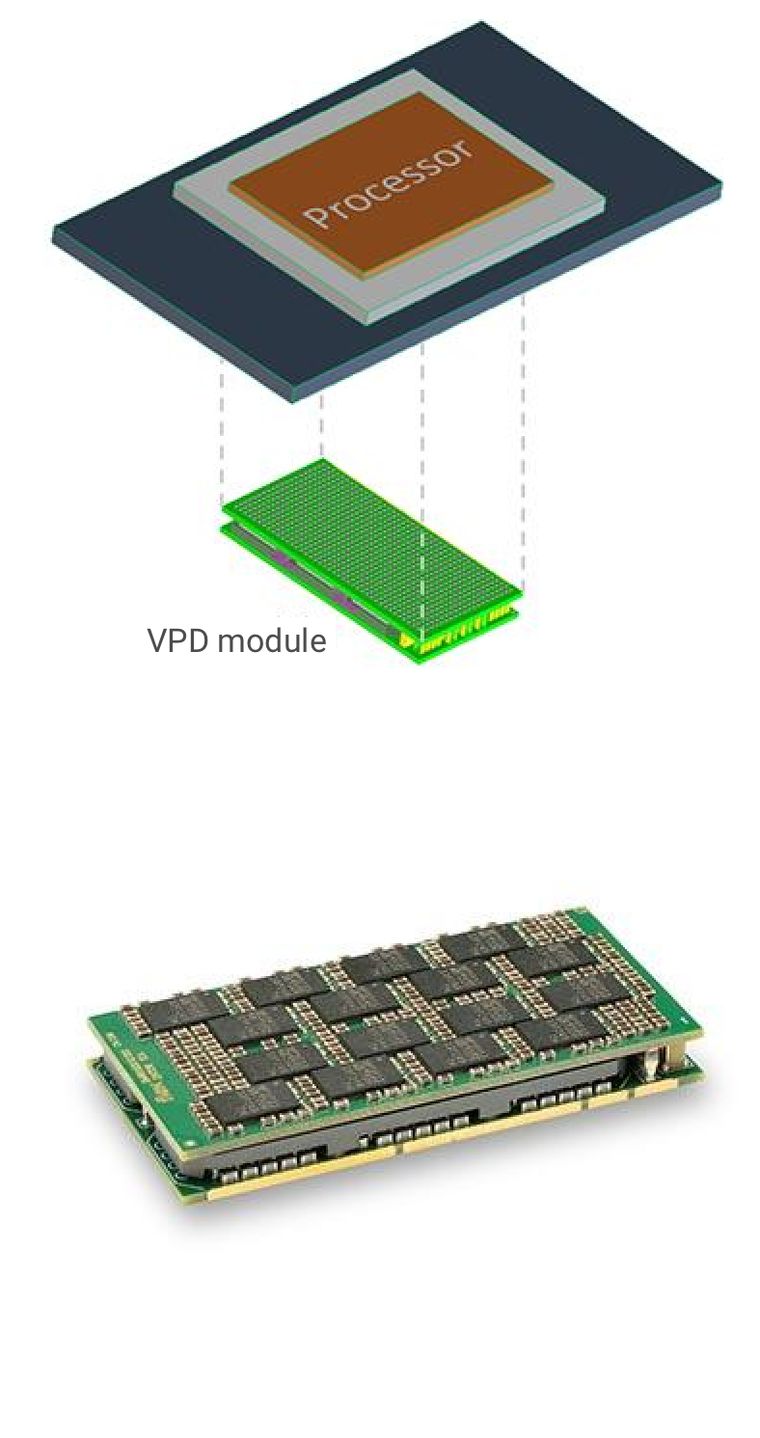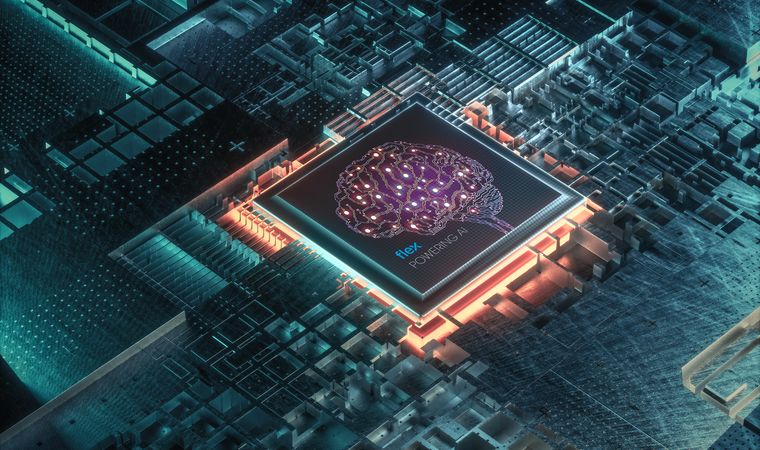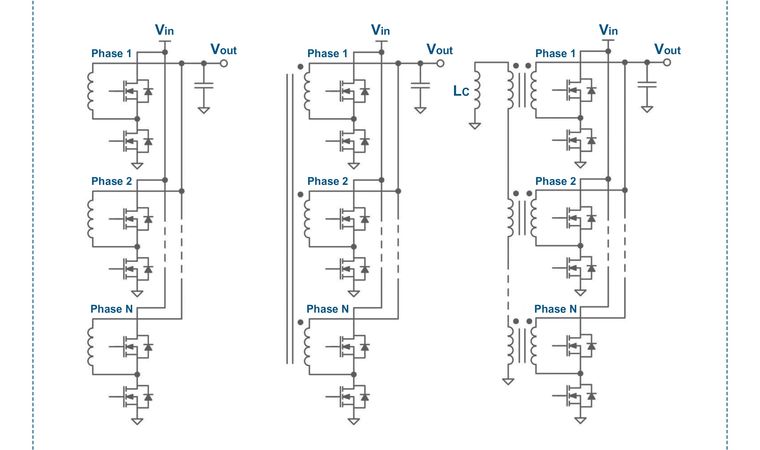Vertical Power Delivery (VPD) solutions

Power hungry applications such as Artificial Intelligence (AI) and Machine Learning (ML) which utilize the latest ASICs or xPUs (TPU/GPU/CPU/NPU/IPU) require vast amounts of current to be delivered to the core at sub 1V levels, and need to deal with ultra fast load transient demands with the least amount of disturbance to the critical voltages used to feed them.
New power delivery techniques such as Vertical Power Delivery, or VPD are needed, where the power is located directly below the load, which delivers several benefits:
- Huge reduction in board space taken up by alternative lateral power solutions located on the top side
- Reduced power distribution network (PDN) losses compared to lateral power delivery solutions
- Lower parasitic path from the converter to the load
- Improved system efficiency
- Ball grid array designed to directly match the pin-map of each xPU/ASIC reducing routing complexity
- Customized profile, scalable multi-rail solutions
- Modular designs offer ease of manufacturing and vendor flexibility
- Increased power delivery efficiency, reduces overall energy consumption
One example of a customized VPD solution we have developed is shown here for reference, but if this is an area of interest to you for your next design, please reach out to us at pm.info@flex.com to discuss further how we can support your next generation designs.
Please also take a look at some of the resources we offer below:
Featured Content

The increase in modern data processing such as in AI, machine learning and streaming has resulted in server chips drawing peaks of supply current that can be over 1000 A. The associated power conversion modules must be closer than ever to avoid resulting voltage drops - this blog introduces Vertical Power Modules which help solve the problem.

Artificial intelligence or AI as a process is placing extra loads on datacenters, both in computing throughput and in energy consumed. As a result, provision of power with maximum efficiency is a major consideration along with power density of the power conversion hardware

The most power-hungry ICs, such as GPUs in data center AI applications, need low voltage power rails that can supply 1000A+ with ultra-fast load transient response. The Trans-Inductor Voltage Regulator (TLVR) technique discussed in this blog is a recent innovation that meets these requirements.
In modern computing systems, loads are often dynamically changing with high peak to average ratios. To reduce unnecessary costs and to save space, DC/DC converters can be specified with limited peak power ratings to cover these conditions. To avoid stress, DC/DCs must have secure over-temperature immunity.
The advance of AI, machine learning (ML), cryptocurrencies and cloud computing is dramatically reshaping data centers. Needing to support a wide array of services from high-resolution video streaming to complex AI-driven data processing that require intensive computational power, data centers are rapidly becoming one of the largest consumers of global energy resources.
With the enormous power levels seen in latest AI-targeted processors, liquid cooling has become a necessity.
